Helen Hunt, 60, Stuns During Her Latest Appearance, and Her Lips Become the Center of Attention

We fly away from Earth to look at it from a distance. It glows like a holiday tree! Big cities look like yellow spots at night. And during the day we see strange structures, like a palm tree-shaped island in the UAE or a dark band that runs all the way through China — the Great Wall. These are traces of human existence.
Now let’s point our telescope at other planets. Mars? It’s just an empty, endless desert. Venus? Only rocks and volcanoes. Even if we look into distant space, all the planets out there are deserted and lifeless. Not a single trace of an extraterrestrial civilization.
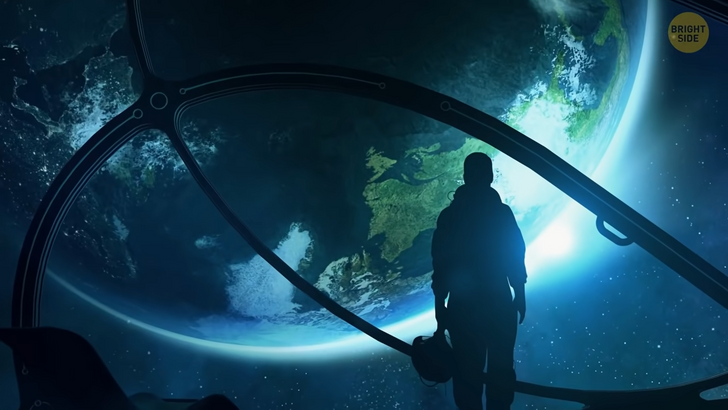
Many people are convinced that life on Earth isn’t unique at all. Here’s our galaxy. There are billions of sun-like stars. And here is the entire observable universe with billions of such galaxies. There’s an almost infinite number of stars. And near each of them, there may be habitable worlds.
But we may not have found life on other planets because it hides from us under the surface. For example, there’s Europa, a satellite of Jupiter slightly smaller than our Moon. Its structure resembles a soft-boiled egg. Its surface is a hard crust of ice. But if you take a big enough drill, you can get to the liquid yolk: an ocean of water.
Jupiter and its satellites are very far from the Sun, so it’s quite cold there — about 270 degrees below zero. So liquid water instantly turns to ice. But Jupiter has a strong gravitational force. That causes a lot of friction inside Europa. And its core heats up. The heat melts the ice, and we have a watery ocean under the surface.
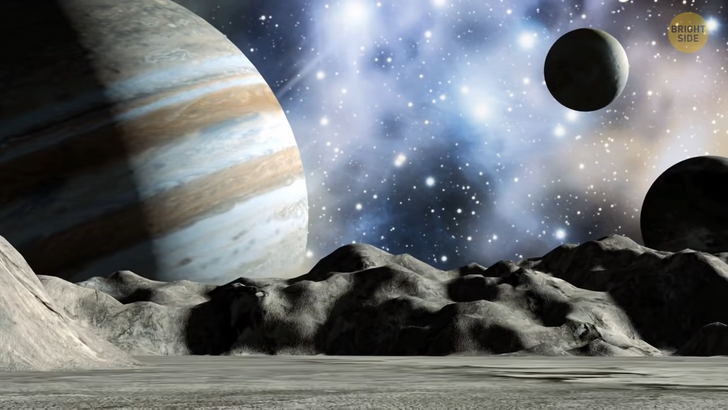
Water is the foundation of all life. So there could be simple bacteria in that ocean. And who knows, maybe there are other life forms out there. For example, weirdly shaped fish. Because of the weak gravity, their bodies are built differently. Or something like whales feeding on plankton.
In 2009, scientists found a planet that is completely covered by an ocean: GJ 1214. It’s about 40 light-years from Earth. And about 75% of its mass is water. Still, the temperatures on this planet are so high that water evaporates and takes the form of “super-liquid water”. There’s so much steam there it feels as thick as water itself. No life could exist in such conditions.
But scientists have recently found at least 24 planets better than Earth and called them superhabitable. These planets orbit distant stars in their habitable zone. It’s the sweet spot at a perfect distance from the star. In our solar system, Venus, Earth, and Mars are in this zone.
A superhabitable planet must be 10% larger than Earth and have stronger gravity. That way, it can have a denser atmosphere. A temperature 8 degrees higher than on Earth would make the planet more humid. This would encourage a variety of living organisms there.

These planets may be great for life, but it’s hard to tell if there is life there already. The main marker that would confirm the existence of an advanced civilization there might be radio waves. Imagine a habitable planet similar to Earth. In the process of evolution intelligent beings appeared there, like humans. They’re much taller because of low gravity. And their eyes are adapted to the light from another star, much brighter than the Sun.
Sooner or later, this civilization will have to use radio waves to communicate with each other. We can think of these waves as loud sound from speakers. Here’s Earth. We’re now actively using radio waves, and the noise coming from our planet is pretty serious. If a neighboring planet had radio telescopes — big dishes that catch these waves, — they would realize that life is blooming here.
There are many radio telescopes on Earth that are pointed into distant space, waiting for a signal from aliens. But we haven’t received anything yet. Still, that doesn’t mean there isn’t a planet somewhere in the universe that emits radio waves. It’s all about distance.
We’re jumping 200 light-years to another star. Suppose there’s a planet X where life exists. The civilization here is advanced enough to use radio waves. So, they release the first wave into space. Our radio telescopes won’t be able to pick it up until 200 years later.
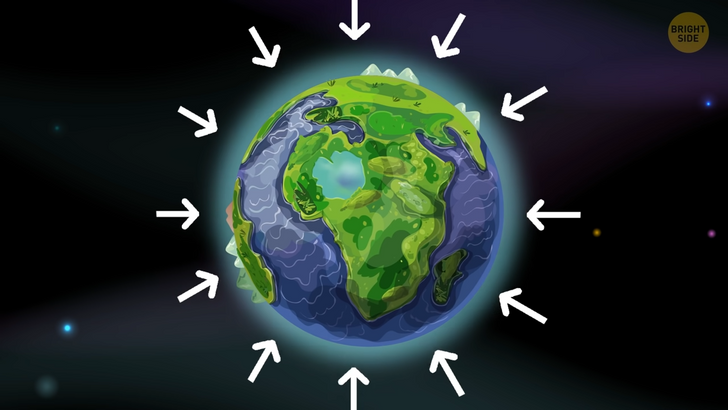
This also works the other way around. Radio communication on Earth has only existed since 1895. Our radio signal won’t reach Planet X until 2095. And only then the aliens will hear our voice. But this radio noise doesn’t stay for long.
Every year, our technology improves, and our radio noise decreases. We’re beginning to use mobile communication, cable TV, and fiber optics. This all reduces the volume of our planet in the radio spectrum. And soon we will simply become invisible to other planets.
The same thing is happening on the other side. So the radio waves coming from civilizations are a brief blip on the cosmic scale. And we can’t accept radio silence as proof that extraterrestrial life doesn’t exist.
A giant telescope, which could take a direct photo of a possibly inhabited planet, would change the situation. We zoom in on the photo, and there it is! We see alien cities with tall buildings and lots of antennas. But now we can’t look that far away. We can take pictures of Mars and its satellites, and even their quality misleads us.
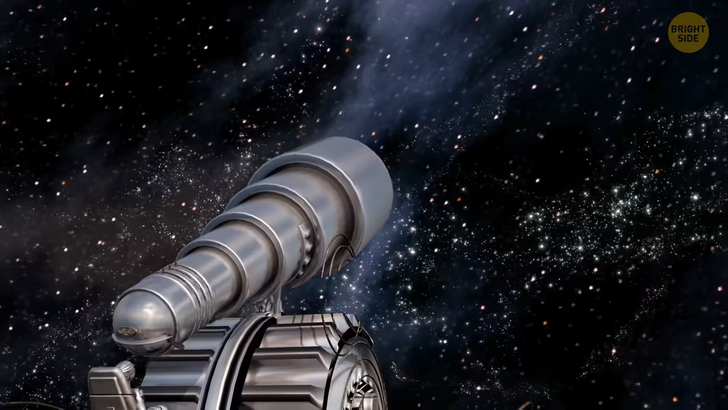
For example, Cydonia. It looks just like a human face on Mars! We thought there used to be an ancient civilization there that made some sort of sculpture or memorial. More extravagant theories said it was the remains of a giant human. And there’s a whole body of it under the sands of Mars.
But in fact, it was just a hill. Strong winds blew out some hollows there. And when there was a shadow in those hollows, we took them for human eyes and a mouth. Or a monolith on Mars’ satellite, Phobos. We found a smooth rock there that was almost as tall as the pyramid of Cheops.
This news has spawned many theories about the civilization that built it. But it turned out to be no more than a rock. The infinite number of stars and worlds around them almost guarantees the existence of other civilizations. So why wouldn’t they come to Earth, right?
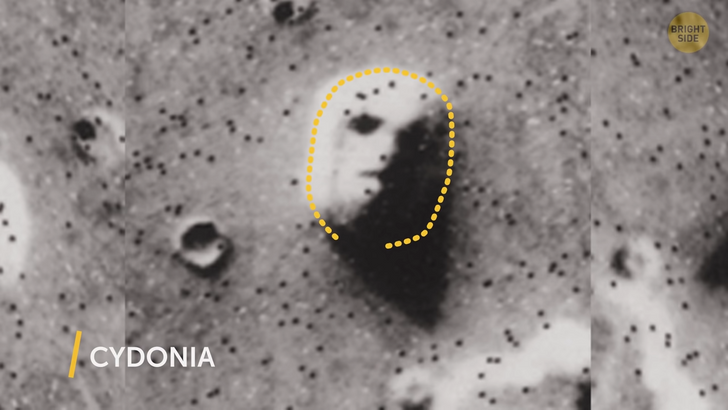
We think that life throughout the universe develops in similar scenarios. The emergence of simple life forms, followed by evolution, and growth of a technologically advanced civilization. But, just like on Earth, cataclysms happen there too, causing mass extinctions. Meteorites, for example. Perhaps there was a civilization out there, ready to go into outer space.
But a huge meteorite, like the one that wiped the dinosaurs off the Earth’s surface, made that civilization disappear. And life on that planet began a new cycle from scratch. In addition, the more advanced the civilization, the greater the risk of its self-destruction. Scientists might conduct experiments in machines like the Large Hadron Collider and accidentally create a black hole there.
It would begin to swallow everything around it and grow in size. Soon, all the super-developed cities of this civilization and the entire planet would simply disappear. Another possibility for super-advanced civilizations is to travel through wormholes. Those are tunnels in space-time between universes. Aliens might travel through them and lose interest in going back.
But it’s also possible that life on Earth is unique. That’s because our planet was formed thanks to a number of incredible coincidences. The first is the location of our solar system in the galaxy. In the Milky Way, there are constant fireworks of exploding supernovae. The radiation from these explosions destroys everything around it at great distances. Our solar system is right in the sweet spot of the galactic orbit where we’re safe from such explosions.
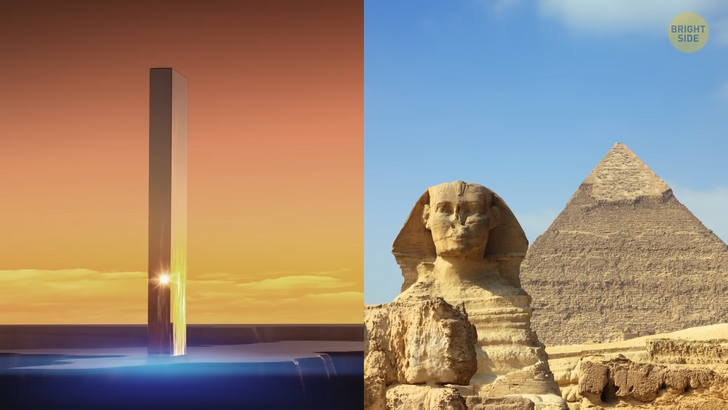
Another factor is the Moon. One theory of the formation of the Moon says that about 4.5 billion years ago, a meteorite the size of Mars crashed into us. If the impact had been straight, the Earth would have just broken apart. And if that meteorite had only scratched the Earth, the pieces would have just flown away.
But the collision occurred precisely so that part of the meteorite remained in Earth’s orbit and formed the Moon. Then, the Moon stabilized the Earth’s rotation and heated our core with gravity. Only then our planet developed a magnetic field, which protects us from the solar wind.

Other scientists believe that life outside Earth may be biochemically different. Carbon and water are the basis of our bodies. But carbon could be replaced with silicon or phosphorus. And water could be replaced with ammonia or methane.
These atoms could form molecules of different shapes and perhaps assemble into a living organism. Life based on such elements would be unlike anything seen on Earth.











